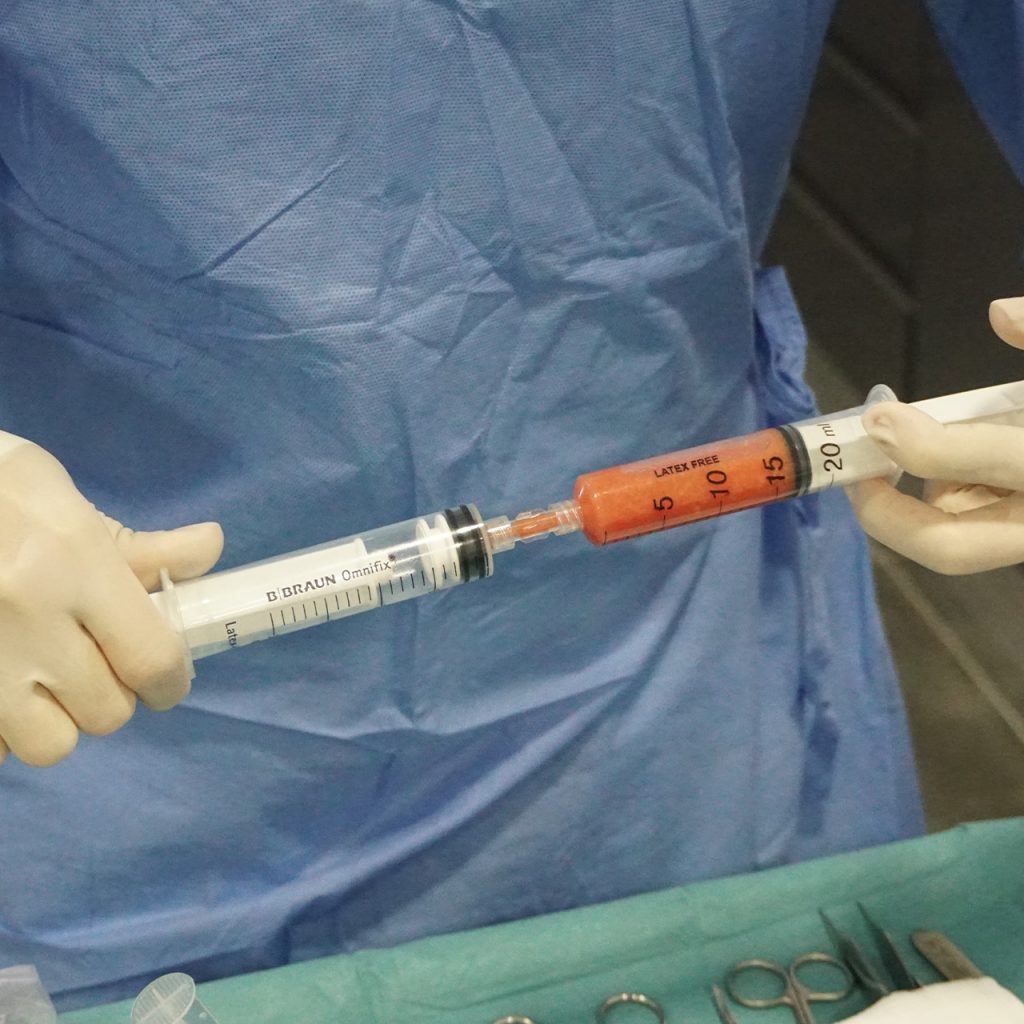Fat transfer is often seen as a cosmetic procedure focused on physical appearance. However, it offers significant psychological benefits that many overlook. People who undergo fat transfer frequently report increased self-esteem and confidence. The positive change in their body image for cosmetic surgery patients can lead to improved mental health and social interactions, including fat reduction, breast reconstruction, and fat transplants.
Unlike traditional methods that might only address surface-level concerns, fat transfer taps into deeper emotional needs. It empowers individuals to embrace their bodies, fostering a sense of ownership and satisfaction. This transformation goes beyond aesthetics; fat transplantation enhances overall well-being through fat grafting and fat transfer procedures. Understanding these psychological benefits can change how we view fat transfer, making it more than just a beauty trend.
Key Takeaways
-
Fat transfer can improve your self-esteem by enhancing your appearance, making you feel more confident in social situations.
-
The procedure is minimally invasive, which means a quicker recovery time compared to more invasive surgeries, allowing you to return to daily activities sooner.
-
Expect a personalized consultation where your goals and concerns are discussed; this helps tailor the procedure to meet your specific needs.
-
Post-procedure care is essential; following the guidelines can lead to better results and a smoother recovery process.
-
Emotional benefits include improved body image and increased happiness, as many patients report feeling more satisfied with their appearance after the procedure.
-
Mental health enhancements may stem from the positive changes in self-perception, leading to greater overall well-being and social interactions.
Understanding Fat Transfer
Definition
Fat transfer is a cosmetic procedure. It involves the transfer of fat from one area of the body to another. This method uses autologous fat grafting, meaning the fat comes from the patient’s own body.
Purpose
The primary purpose of fat transfer is to enhance body contours. It helps restore volume in areas that may have lost fullness through fat transplantation and fat transfer procedures. Common areas for this procedure include the face, breasts, and buttocks.
Natural Approach
Fat transfer uses the body’s own fat instead of synthetic fillers. This natural approach offers several benefits. Patients often experience fewer allergic reactions since the fat is their own. The procedure can provide a more natural look compared to artificial fillers.
Procedure Overview
The fat transfer procedure begins with fat extraction. Surgeons typically remove fat from areas like the abdomen or thighs. They use a technique called liposuction for this step. Once the fat deposits are collected, they undergo processing to purify them.
Next, the surgeon injects the processed fat into the target area. This step requires precision to ensure even distribution. The injected fat fills in hollows or enhances curves effectively.
Recovery Mechanism
Recovery after a fat transfer varies per individual. Initial swelling and bruising may occur at both the donor and recipient sites. Most patients return to normal activities within a week. However, complete recovery might take several weeks.
During recovery, it’s crucial to follow post-operative care instructions closely. These guidelines help maximize results and promote healing.
Fat Survival Rate
Not all transferred fat survives. Studies show that about 60-80% of transferred fat can survive long-term. Factors influencing survival include the technique used and how well the patient follows recovery protocols.
Surviving fat integrates into surrounding tissue over time. This integration contributes to lasting results and improved aesthetics.
Subsequent Fat Grafting
In some cases, patients may require subsequent fat grafting procedures. These follow-up sessions can enhance results further if needed. Surgeons assess how much fat has survived before planning additional treatments.
Benefits
Fat transfer offers numerous psychological benefits as well. Many patients report increased self-esteem after their procedures. The enhanced body contours contribute to a better body image. Feeling good about one’s appearance can lead to greater confidence in social situations.
Patients also appreciate that this method provides a dual benefit: reducing unwanted fat while enhancing desired areas. This unique combination makes it an appealing choice for many individuals seeking cosmetic enhancements.
Overview of the Procedure
Fat Harvesting
The fat transfer procedure begins with fat harvesting. Surgeons often use a liposuction method to extract fat from areas with excess fat. Common sites for harvesting include the abdomen, thighs, and flanks.
Surgeons insert a thin tube called a cannula into the targeted area. This tube helps remove fat through suction. The process is minimally invasive and usually requires only local anesthesia. Patients can often go home the same day.
Purification Process
After harvesting, the next step is purification. The extracted fat goes through a process to separate viable fat cells from impurities and excess fluids. This step ensures that only healthy fat cells are used in the transfer.
Surgeons typically use a centrifuge for this process. The centrifuge spins the harvested fat at high speeds, separating unwanted materials. After purification, the fat is ready for injection into desired areas.
Injection into Target Areas
Once purified, surgeons inject the fat into specific areas of the body. Common treatment areas include the face, breasts, and buttocks. Each area has unique benefits from fat transfer.
For the face, transferring fat can reduce wrinkles and add volume to cheeks. In breast enhancement, it provides a natural look without implants. For buttocks augmentation, it creates a fuller shape and improves overall body proportions.
This cosmetic surgery procedure offers a dual benefit. It removes unwanted fat from one area while enhancing another. Many patients appreciate this two-in-one outcome.
Recovery and Results
Recovery from a fat transfer procedure varies by individual. Most people experience some swelling and bruising at both the donor and injection sites. These symptoms usually subside within a few weeks.
Results appear gradually as swelling decreases. Patients can enjoy their new contours after about three months when final results become visible. Fat transfer results can last for years if patients maintain a stable weight.
Emotional Impact
Many individuals report positive emotional changes after undergoing this procedure. Improved self-image boosts confidence significantly. People feel more comfortable in their skin and enjoy social situations more.
Fat transfer also leads to satisfaction with body shape and size. For many, it transforms how they view themselves in mirrors or photographs.
What to Expect
Improved Symmetry
Fat transfer can lead to improved symmetry in the treated areas. This procedure redistributes fat from one part of the body to another. For example, transferring fat to the breasts or buttocks can create a more balanced appearance. Many patients notice a fuller, more youthful look after the procedure.
Results vary among individuals. Some may achieve significant changes, while others see subtle enhancements. The overall goal is to enhance natural beauty and boost self-confidence.
Volume Enhancement
Volume is another key benefit of fat transfer. Patients often seek this treatment to add fullness to specific areas. This could be the face, breasts, or buttocks. The added volume can improve contours and create a more appealing shape.
However, it’s important to note that results may not be permanent. The body absorbs some of the transferred fat over time. Typically, about 30-50% of the injected fat survives long-term. Therefore, patients might require touch-up procedures for lasting effects.
Temporary Results
The temporary nature of some results is a crucial aspect to understand. After the procedure, patients may experience immediate fullness. However, swelling can mask the final outcome during recovery.
Fat absorption varies by individual. Factors such as metabolism and lifestyle choices play a role in how much fat remains after the transfer. It’s essential for patients to have realistic expectations regarding their results.
Recovery Timeline
Recovery time typically ranges from one to two weeks. During this period, patients should plan for some downtime. Swelling and bruising are common after the procedure. These symptoms usually peak within the first few days.
Patients can manage discomfort with prescribed pain relief medications. Ice packs can also help reduce swelling in the early stages of recovery. Most individuals can return to light activities within a week.
Post-Procedure Care
Aftercare is vital for optimal results. Patients should follow their surgeon’s instructions closely. This includes avoiding strenuous exercise for several weeks post-procedure.
Maintaining a healthy lifestyle is essential as well. Proper hydration and nutrition support healing and may enhance results. Regular follow-ups with the surgeon help monitor progress and address any concerns.
Steps During the Process
Initial Consultation
A consultation is the first step in a fat transfer procedure. Patients meet with their surgeon to discuss goals and expectations. The doctor assesses the body to identify suitable donor sites. Common areas include the abdomen, thighs, or flanks. This evaluation helps in determining how much fat can be safely harvested.
Surgeons also review medical history during this meeting. They check for any conditions that could complicate surgery. Patients should ask questions to understand the process better. This conversation sets the tone for the entire cosmetic surgery journey.
Liposuction Technique
Liposuction is the method used for fat extraction. Surgeons typically employ tumescent liposuction. This technique involves injecting a solution of saline, lidocaine, and epinephrine into the donor area. The solution numbs the area and minimizes bleeding.
Once prepared, small incisions are made in the skin. A thin tube called a cannula is inserted through these incisions. The surgeon moves the cannula back and forth to break up fat cells. A suction device then removes these cells from the body.
This method ensures a controlled extraction of fat while keeping damage to surrounding tissues minimal. It allows for smoother results and quicker recovery times.

Injection Process
After extracting fat, attention turns to injection. The surgeon prepares the harvested fat for transfer by filtering it to remove impurities. This step ensures only healthy fat cells are used.
The injection process requires precision. Surgeons inject small amounts of fat into specific areas of the body. They do this using syringes with fine needles. Careful placement creates a natural look and feel.
Surgeons often work in layers when injecting fat to ensure even distribution. This technique helps avoid lumps or uneven surfaces after healing. Patients may notice some swelling initially, but this subsides over time.
The careful approach during this stage enhances overall results and boosts patient satisfaction.
Post-Procedure Care
Aftercare Instructions
Following breast surgery, it’s crucial to adhere to specific aftercare instructions. Surgeons provide detailed guidelines for post-procedure care. These may include how to clean the area and what medications to take. Patients should avoid touching or applying pressure to the treated areas. Proper care can help prevent complications and ensure optimal results.
Patients must keep the surgical site clean and dry. This reduces the risk of infection. Changing dressings regularly is also essential, as instructed by the surgeon. If any unusual symptoms arise, such as increased swelling or redness, patients should contact their healthcare provider immediately.
Avoid Strenuous Activities
Avoiding strenuous activities is vital in the early days after the procedure. Engaging in heavy lifting or intense exercise can strain the body. This strain may disrupt healing and affect the final results of the fat transfer. Most surgeons recommend resting for at least one to two weeks post-surgery.
Light activities are acceptable, but patients should listen to their bodies. Activities like walking can help with circulation without overexerting oneself. Gradually increasing activity levels helps maintain overall health while allowing recovery time.
Follow-Up Appointments
Follow-up appointments play a key role in monitoring progress after breast surgery. These visits allow healthcare providers to assess healing and address any concerns. Typically, follow-ups occur within a week after surgery, then again at intervals set by the surgeon.
During these appointments, doctors evaluate the surgical site for proper healing. They check for signs of complications and ensure that fat transfer results meet expectations. Patients should prepare questions ahead of time to maximize these visits.
Regular check-ins promote a sense of security during recovery. They reassure patients that their healing process is on track. It’s essential not to skip these appointments, as they are crucial for long-term success.
Emotional and Mental Benefits
Increased Happiness
Achieving desired physical changes can lead to increased happiness. Many individuals feel more confident after undergoing fat transfer procedures. This confidence often stems from improved self-image. A positive body image can enhance overall life satisfaction. Studies show that people who are satisfied with their appearance report higher levels of happiness.
Reduced Anxiety
Fat transfer can significantly reduce anxiety related to body image concerns. Many individuals struggle with insecurities about their bodies. These insecurities can lead to social withdrawal and low self-esteem. After cosmetic surgery, many report a decrease in these feelings. They often feel more comfortable in their skin, which lowers anxiety levels.
Enhanced Social Interactions
Improved self-image can lead to better social interactions. Individuals who feel good about themselves tend to engage more with others. They may participate in social events they previously avoided. This change can foster new friendships and strengthen existing ones. Positive self-perception encourages open communication and connection.
Long-Term Effects
The emotional benefits of fat transfer can extend beyond the initial recovery period. Over time, individuals may notice lasting improvements in mental health. They often experience a boost in self-esteem that persists long after the procedure. A study published in the Aesthetic Surgery Journal found that patients reported significant improvements in quality of life post-surgery.
Personal Experiences
Real-life experiences highlight these emotional benefits. For example, one patient shared how her confidence soared after the procedure. She felt empowered and began pursuing new opportunities at work. Another individual mentioned feeling liberated from years of self-doubt. These personal stories illustrate the profound impact cosmetic surgery can have on mental well-being.
Support Systems
Support systems play a crucial role in enhancing these emotional benefits. Friends and family often provide encouragement during recovery. Their support can help individuals adjust to their new appearance. Engaging with supportive communities, both online and offline, also fosters positive experiences.
Boost in Self-Esteem
Enhanced Self-Worth
Correcting perceived imperfections can significantly elevate self-worth. Many people feel insecure about certain features. Cosmetic surgeries, including fat transfer procedures, can address these concerns. For instance, breast reconstruction after surgery can help restore a sense of normalcy and confidence. Patients often report feeling more comfortable in their skin after such procedures.
When individuals see improvements in their appearance, they tend to feel better about themselves. This positive change influences how they interact with others. The boost in self-esteem is not just about looks; it reflects a deeper sense of acceptance. Feeling good about one’s appearance can lead to greater social engagement.
Empowerment Through Control
Taking control of one’s appearance empowers individuals. Many view cosmetic surgery as a way to reclaim their body. This empowerment often leads to a more positive outlook on life. Patients who undergo fat transfer procedures frequently express feelings of autonomy over their choices. They appreciate the ability to make decisions that enhance their lives.
The act of choosing cosmetic surgery can be liberating. It allows individuals to redefine their identity based on personal desires rather than societal standards. This control fosters a sense of ownership over one’s image and well-being.
Positive Feedback Loop
The relationship between improved looks and confidence creates a positive feedback loop. As patients notice changes in their appearance, they often experience increased confidence. This newfound confidence encourages them to engage in social situations more actively. They may take on new challenges or pursue opportunities they previously avoided.
For example, someone who has undergone surgical facelifts may feel more inclined to participate in public speaking or social gatherings. The transformation affects not only how they see themselves but also how others perceive them. Compliments and positive reinforcement from peers further enhance this cycle.
Patients frequently share stories of how fat transfer procedures have changed their lives. They describe feeling more outgoing and willing to try new things. This shift is closely linked to the psychological benefits gained from improved self-image.
Enhancements in Mental Health
Physical Satisfaction
Fat transfer can lead to significant physical satisfaction. Patients often feel more comfortable in their bodies after the procedure. This comfort can reduce stress levels. When individuals feel good about their appearance, they tend to experience less anxiety. Studies show that physical satisfaction closely links with emotional well-being.
Improved body image from fat transfer can foster a sense of control. People may feel empowered by their new look. This empowerment can help them manage daily stressors better. As a result, they may find themselves engaging more actively in social situations.
Decrease in Depression Symptoms
Research indicates that improved body image can lead to fewer symptoms of depression. Many individuals struggle with negative feelings about their bodies as they age. Fat transfer offers a solution by enhancing their appearance.
Feeling better about one’s body can lift spirits significantly. Individuals report feeling happier and more confident after the procedure. A positive self-image often translates into an improved outlook on life. As patients see changes in their appearance, they may also notice a decline in depressive thoughts.
Increased Self-Assurance
The psychological benefits of fat transfer extend beyond mere appearance. Enhanced self-assurance is a major factor here. With increased confidence, people are likely to engage more socially. They may take on new challenges or pursue goals they previously avoided.
A boost in self-assurance can improve overall quality of life. For instance, individuals might seek new job opportunities or rekindle relationships that had faded. They become more willing to participate in activities they once shunned due to insecurity.
Fat transfer impacts mental health positively over time. Many patients express gratitude for the change it brings to their lives. The connection between how one feels physically and emotionally becomes clearer through this process.
In summary, the psychological benefits of fat transfer are profound. It enhances physical satisfaction, reduces symptoms of depression, and increases self-assurance. These changes contribute significantly to a better quality of life for many individuals.
Closing Thoughts
Fat transfer isn’t just about aesthetics; it offers real emotional and mental perks. You can experience a surge in self-esteem and improved mental health after the procedure. It’s a game-changer, helping you feel more confident and comfortable in your skin. This holistic approach to beauty enhances both your body and mind.
Consider taking the leap if you’re looking for a boost in your self-image. The psychological benefits are significant, making this choice worthwhile. Explore your options and consult with professionals who understand your needs. Your journey toward a more confident you starts now!
Frequently Asked Questions
What is fat transfer?
Fat transfer is a cosmetic procedure that involves removing fat from one area of the body and injecting it into another. It enhances volume and contour, providing natural-looking results.
How long does the fat transfer procedure take?
The procedure typically takes 1 to 3 hours, depending on the areas being treated. It’s usually performed under local anesthesia or sedation for patient comfort.
What are the main psychological benefits of fat transfer?
Patients often experience improved self-esteem and body image after fat transfer. The procedure can lead to greater confidence and satisfaction with one’s appearance.
Is there any downtime after a fat transfer?
Yes, some downtime is expected. Patients may experience swelling and bruising, but most return to normal activities within a week.
How long do the results last?
Results can last several months to years, depending on individual factors like metabolism and lifestyle. Maintaining a healthy lifestyle can help prolong the effects.
Are there risks associated with fat transfer?
Like any medical procedure, fat transfer carries risks such as infection, asymmetry, or fat resorption. Consulting with a qualified surgeon minimizes these risks.
Who is an ideal candidate for fat transfer?
Ideal candidates are generally healthy individuals looking to enhance specific body areas. A consultation with a specialist will determine suitability based on personal goals and medical history.





